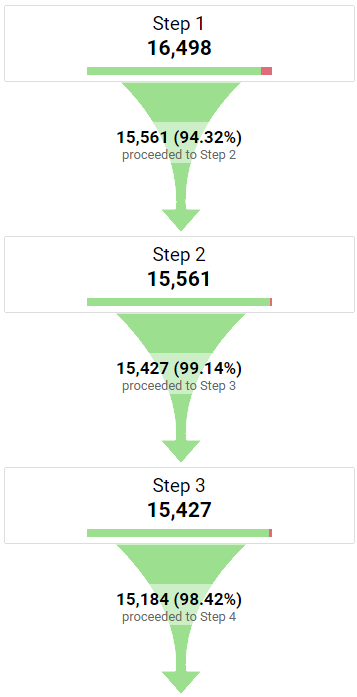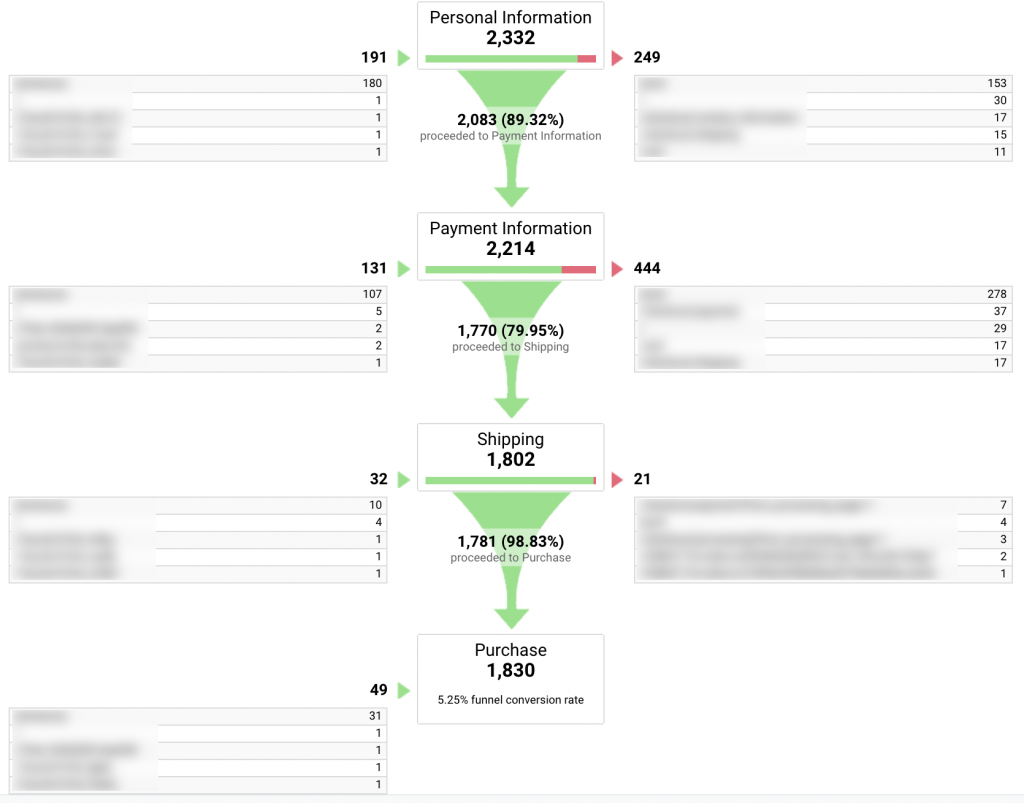What Data Is Google Analytics Goals Unable to Track: A Complete Guide
What Data Is Google Analytics Goals Unable to Track: A Complete Guide
Blog Article
Introducing the Blind Destinations: Recognizing What Google Analytics Goals Can not Gauge
In the world of digital analytics, Google Analytics stands as a powerful device for tracking and examining on the internet customer interactions. Nonetheless, amid its robust capacities, there exist dead spots that usually avert measurement. Recognizing what Google Analytics goals can not measure is vital for acquiring a detailed sight of customer habits and involvement. As we dive right into the ins and outs of these blind spots, we discover an intricate internet of undiscovered areas that hold valuable insights into customer activities and inspirations, challenging standard knowledge and clarifying the constraints of our data-driven understanding.
Customer Habits on External Platforms
Recognizing just how individuals interact on exterior systems is vital for optimizing on-line strategies. External platforms, such as social media networks, recommendation websites, and online discussion forums, play a significant function in driving traffic to a company's website. By evaluating individual behavior on these platforms, services can get important understandings into the effectiveness of their advertising and marketing initiatives and the choices of their target audience.
One secret facet of individual habits on exterior systems is the referral source. By tracking where the customers are coming from, businesses can recognize which systems are driving one of the most traffic to their site. This information can aid business assign their resources better, concentrating on the platforms that generate the best results.

Offline Communications and conversions
Analyzing individual habits on outside platforms provides important understandings into on-line strategies; however, considering offline conversions and communications is equally imperative for a detailed understanding of a company's general efficiency. Offline conversions, such as in-store purchases or phone inquiries, play a considerable duty in several businesses' success.

Acknowledgment Beyond Last Click
When diving into the realm of digital advertising and marketing analytics, it becomes vital to look past the single touchpoint of the last click for an extra extensive understanding of acknowledgment. While Google Analytics gives valuable insights right into user actions, relying solely on last-click acknowledgment can be restricting - what data is google analytics goals unable to track. Attribution versions that surpass the last click supply a more nuanced sight of the consumer journey, taking into consideration all the touchpoints that cause a conversion
Attribution past the last click allows online marketers to assign credit score to numerous interactions along the conversion path, offering a clearer photo of the efficiency of various marketing channels. By discovering multi-touch acknowledgment versions such as linear, time degeneration, or position-based acknowledgment, organizations can much better designate their advertising budgets and enhance their techniques for maximum influence.
Comprehending the influence of each touchpoint in the conversion procedure is critical for making notified choices and making best use of ROI. By accepting acknowledgment past the last click, services can gain deeper understandings right into consumer actions and customize their marketing initiatives much more properly.
Cross-Device and Cross-Browser Monitoring

Similarly, cross-browser tracking matches cross-device my blog tracking by catching customer actions as they switch between different internet internet browsers. Recognizing how users communicate with web sites on different internet browsers can help online marketers enhance their on the internet experiences to make sure uniformity and capability throughout different platforms.
Qualitative Data and Individual Intent
Comprehending individual intent with qualitative data analysis is critical for developing targeted digital marketing techniques that resonate with the needs and choices of the target market. Qualitative information gives understandings right into the 'why' behind individual actions, clarifying motivations, emotions, and choices that measurable data alone can not capture. By evaluating user feedback, remarks, and communications, marketing professionals can reveal useful info regarding user intent, permitting them to customize their messaging, material, and offerings to better align with what their audience is looking for.
Qualitative data also aids in comprehending the context in which users involve with an internet site or app. This contextual understanding enables marketers to develop more customized and relevant experiences, inevitably driving greater interaction and conversion rates. By delving right into individual intent through qualitative information analysis, organizations can get a deeper understanding of their target market, resulting in more efficient marketing methods that meet users' assumptions and needs.
Final Thought
In conclusion, Google Analytics objectives have limitations in determining user actions visit homepage on external systems, offline conversions, acknowledgment beyond last click, cross-device and cross-browser monitoring, and qualitative data associated with individual intent. what data is google analytics goals unable to track. It is important for services to be familiar with these dead spots in order to supplement their information analysis with various other devices and methods to gain a more extensive understanding of their target market and improve their total electronic advertising methods
By evaluating customer behavior on these platforms, organizations can acquire useful understandings right into the effectiveness of investigate this site their advertising initiatives and the choices of their target audience.
Evaluating individual habits on exterior systems supplies beneficial understandings right into online techniques; nevertheless, considering offline conversions and interactions is equally imperative for an extensive understanding of a business's general efficiency.In electronic advertising analytics, relocating beyond last-click attribution to explore cross-device and cross-browser tracking is important for acquiring an alternative understanding of individual interactions across various platforms and tools. By analyzing user feedback, comments, and interactions, online marketers can reveal important information regarding individual intent, enabling them to tailor their messaging, content, and offerings to much better straighten with what their target market is looking for.
By diving into user intent via qualitative information analysis, services can acquire a deeper understanding of their target audience, leading to a lot more effective advertising and marketing approaches that fulfill individuals' needs and assumptions.
Report this page